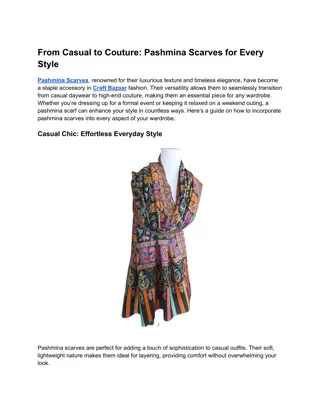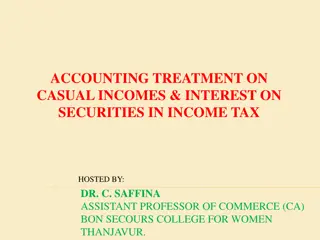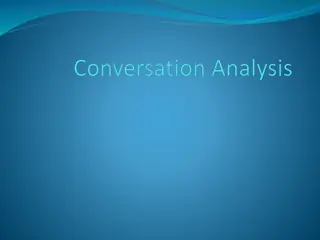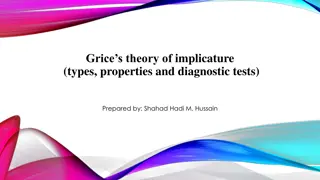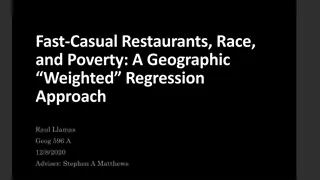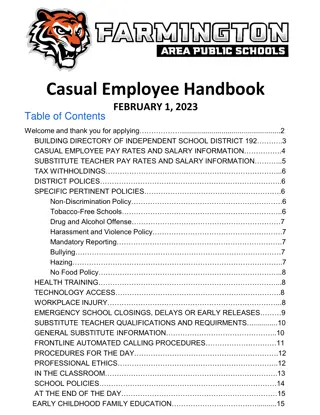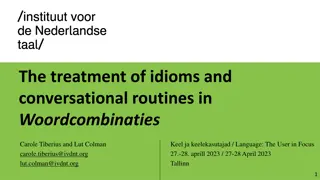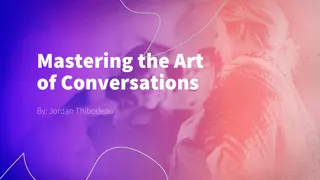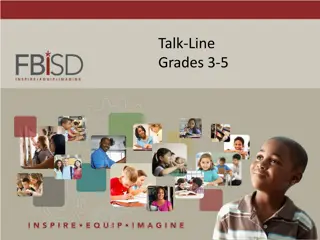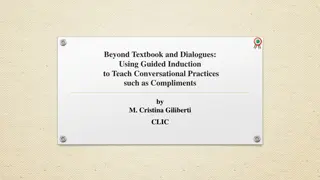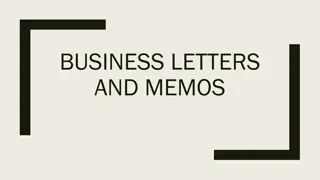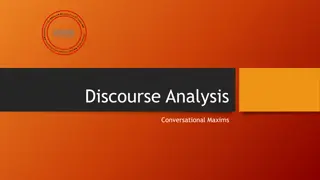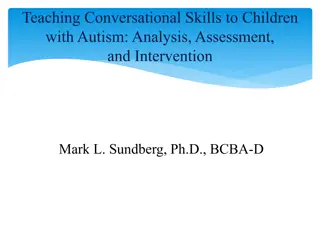Understanding Conversational Design Considerations for Casual Talk
Exploring the nuances of casual conversation design and the challenges in building companion dialogue systems. The discussion includes different types of conversations, the importance of transactional versus interactional dialogue, and the structure of casual conversations. Emphasis is placed on the need for multimodal corpus-based studies to capture the essence of spoken interaction effectively.
Download Presentation

Please find below an Image/Link to download the presentation.
The content on the website is provided AS IS for your information and personal use only. It may not be sold, licensed, or shared on other websites without obtaining consent from the author. Download presentation by click this link. If you encounter any issues during the download, it is possible that the publisher has removed the file from their server.
E N D
Presentation Transcript
Stitching together the conversation design considerations for casual talk Emer Gilmartin, Carl Vogel, ADAPT Centre Trinity College Dublin
Hello Santa Fe www.adaptcentre.ie I m really sorry not to be here in person, and hope all are enjoying workshop!
Motivation www.adaptcentre.ie To better understand the bundle of signals in conversation
www.adaptcentre.ie The Problem: Building companion dialogue systems entails understanding of casual dialogue but Much linguistic theory is based on language similar to writing but highly unlike talk regards spoken interaction as debased, chaotic SDS technology based on Practical Dialogue Hypothesis (Allen, 2000) Constraint introduced to make dialogue modelling tractable Much corpus study of spoken interaction based on Task-based Dialogue Information gap activities MapTask (HCRC), DiaPix (Lucid) Meetings AMI, ICSI These are not corpora of casual or social talk
Transactional v Interactional Conversation www.adaptcentre.ie Ordering a pizza (transactional) performing a well-defined task content ( What? ) vital for success Chat with neighbour (interactional) building/maintaining social bonds social ( How? ) very important Longer form (c 1 hr) casual conversation continuing state of incipient talk Interested in the structure of such conversations
Casual Conversation www.adaptcentre.ie Unmarked central case of spoken interaction A lot of theory and transcript based work, need for multimodal corpus based studies Not monolithic. Can be described at level above the utterance or adjacency paiar as a series of phases: greeting, approach, centre, leavetaking (Ventola) as highly interactive chat and more monologic chunk phases Often multiparty, variable duration up to several hours Most existing corpora task-based, existing casual talk corpora dyadic and short duration (5-15 minutes)
Chat and Chunk www.adaptcentre.ie
Data 6 multiparty conversation of around 1 hour each IWSDS 2016 www.adaptcentre.ie
Annotated into chat and chunk www.adaptcentre.ie All conversations manually segmented at Intonational Phrase (IP) level Manual segmentation was necessary as number of speakers made automatic speaker diarization impossible All conversations transcribed Chunks marked using Slade and Eggins definition of chunks `a segment where one speaker takes the floor and is allowed to dominate the conversation for an extended period. All non-chunk conversation considered chat. Guidelines for annotation created to help disambiguate unclear cases.
January 15, 2016 IWSDS 2016 Chat/Chunk Analysis www.adaptcentre.ie Analysis of Chat and Chunk Phases Phase length, laughter, overlap contrasted in chat and chunk phases. Generally more chat at conversation beginnings, more time overall spent in chunk phases and more chunk phases in all conversations. Probability of transition from chunk to chat falls as conversation progresses. Phase Duration Mean chunk duration approx. 34s Mean chat duration approx. 28s Chunk duration distribution tighter Distributions significantly different Chunk duration Not speaker , gender, conversation dependent
Laughter www.adaptcentre.ie More laughter in chat than chunk Median laughter proportions: Chat 5.4% of production Chunk 2.2% of production 81% of laughter in chunks non-owners
Chat/Chunk analysis www.adaptcentre.ie Overlapping Speech More overlap in chat than chunk Median overlap proportions Chunks - 5.7% (mean = 7.3%) Chat - 14.3% (mean = 16%) Floor Occupancy (% time spent) Overlap and silence more common in chat than in chunk phases More than two speakers in overlap rare
Work in Progress: Topic www.adaptcentre.ie Topic is a feature used to segment text (written or oral) Topic segmentation for casual talk is difficult shading and shifting Chat/Chunk is distinguishable from speech and silence annotation Could chat/chunk phases correspond to topic boundaries in dialogue? Dataset has been annotated for topic, using aboutness Currently working on comparing and contrasting chat/chunk and topic segments in terms of temporal span
Thank You Questions? gilmare@tcd.ie



